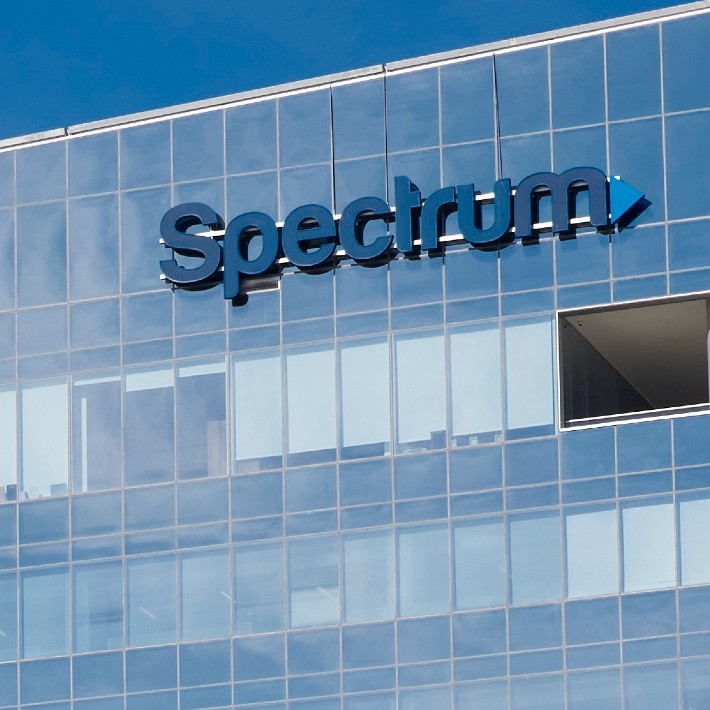Charter does not expect SpectrumOne, a new promotional bundle of home broadband and mobile services, to immediately turnaround slowing broadband subscriber growth.

Charter Communications has high hopes for SpectrumOne, a service convergence promo launched earlier this month that helps customers package the operator's home broadband and mobile offerings.
While the company does expect SpectrumOne to goose line counts for the Spectrum Mobile service, it doesn't expect the new promotional bundle to completely reverse slowing broadband subscriber growth.
The baseline SpectrumOne promo offers home broadband speeds of 300 Mbit/s (downstream), "advanced" home Wi-Fi (with a modem tossed in for no additional cost) and an unlimited line of mobile for $49.99 per month – for 12 months. Promotional pricing climbs to $69.99 per month when paired with home Internet speeds of 500 Mbit/s, and $109.98 per month with 300 Mbit/s home broadband and Charter's pay-TV service. The offering also allows customers to take multiple mobile lines.
Figure 1:  Charter expects to provide a strategy update after COO Chris Winfrey succeeds Tom Rutledge as CEO effective December 1, 2022.
Charter expects to provide a strategy update after COO Chris Winfrey succeeds Tom Rutledge as CEO effective December 1, 2022.
(Source: Charter Communications)
"It's our first attempt and may evolve over time," Charter COO Chris Winfrey said of SpectrumOne on the company's Q3 2022 earnings call Friday. "But SpectrumOne packages seamless connectivity with our products, and they all work better together."
"Looking forward, we expect our new SpectrumOne offer to drive accelerating mobile line growth," Jessica Fischer, Charter's CFO, added.
If so, the promo would only help to accelerate a mobile product category that is already growing quickly. Even without the help of SpectrumOne, Charter added a record 396,000 mobile lines in Q3 2022, beating the prior record of 380,000 in Q4 2021 and improving on the 244,000 additions in the year-ago period. Charter ended Q3 with 4.67 million mobile lines.
"The opportunity in mobile is very large and we're still at the beginning of developing that business," CEO Tom Rutledge said.
Charter, which is exploring a converged core that can manage its fixed and wireless networks, estimates that it has captured just 28% of the combined household spend on wireline and mobile connectivity within its footprint. "So, we remain significantly underpenetrated versus the opportunity in front of us."
Charter also believes that SpectrumOne will "be able to pull broadband growth through," Rutledge said, calling the promo a "complicated sale."
However, Charter does not believe SpectrumOne will completely remedy slowing broadband subscriber growth. Charter added 75,000 high-speed Internet customers (61,000 residential and 14,000 business) in Q3 2022, extending its total to 30.32 million. Charter added 243,000 broadband subs in the year-ago quarter.
"I think [SpectrumOne] can be additive but it's not the solution," Winfrey said. "The problem right now is market activity. When that comes back, I think that's the solution to the broadband growth [issue] … SpectrumOne has the opportunity to drive incremental Internet growth."
Strategy update coming
SpectrumOne signals a strategic shift in Charter's service convergence strategy. But more detail on the company's near-term strategy will be shared in the coming months as Winfrey prepares to succeed Rutledge as Charter CEO effective December 1.
Winfrey said Charter will deliver an update to investors on its strategies in areas such as its network evolution, convergence capabilities, service experience initiatives and its rural expansion and network buildout plans. No date has been set, but it will be scheduled to run after the CEO transition in December, Winfrey said.
"I don't expect any seismic shifts" in areas such as product, pricing, packaging and services, Winfrey said.
However, some details around Charter's network evolution are starting to emerge. Light Reading reported this week that Charter is exploring a distributed access architecture (DAA) for its hybrid fiber/coax (HFC) network based on remote PHY paired with a virtual cable modem termination system (vCMTS). DAA is a clear precursor to DOCSIS 4.0, a new platform that will support multi-gigabit symmetrical speeds, enhanced security and low-latency capabilities.
Meanwhile, Charter is already pushing forward with "high-split" upgrades that will add dedicated capacity to the upstream, putting the operator in position to offer symmetrical gigabit broadband service on its existing DOCSIS 3.1 network. However, Charter's broadband traffic is still dominated by the downstream by a 14:1 ratio, according to Rutledge.
Rutledge pointed out that Charter's D3.1 network upgrade ended up costing $9 per household passed, or $450 million in all to get the plant ready.
The high-split upgrade "is going to cost a little more than that," Rutledge warned. "But it's still a relatively low-cost capital investment that gives you a significant increase in capacity, and it leaves you in a pathway where you can continue to invest with additional technologies, including DOCSIS 4.0."
Cost estimates on a high-split upgrade vary, but some industry experts expect it to be around $100 per household passed.
Financial snapshot
Among other subscriber results, Charter lost 204,000 video subs (-211,000 residential and +7,000 business), for a total of 15.29 million. Rutledge said some of those customers are either cutting pay-TV or downgrading to a different package, but that many are keeping broadband and tacking on Charter's mobile service.
Charter posted Q3 revenues of $13.55 billion, up 3.1%.
Broadband revenues rose to $5.57 billion versus $5.36 billion in the year-ago quarter, while video dipped to $4.37 billion versus $4.50 billion.
Mobile revenues climbed to $750 million compared to $535 million.
Commercial revenues clocked in at $1.75 billion ($1.08 billion for small and midsized businesses and $673 billion for enterprise) compared to $1.71 billion a year ago.
Capital spending jumped to $2.40 billion versus $1.86 billion. The increase was driven by $525 million of spend focused on rural construction initiatives, including Charter buildouts tied to the Rural Digital Opportunity Fund (RDOF).
Related posts:
— Jeff Baumgartner, Senior Editor, Light Reading
About the Author(s)
You May Also Like




.jpeg?width=300&auto=webp&quality=80&disable=upscale)






